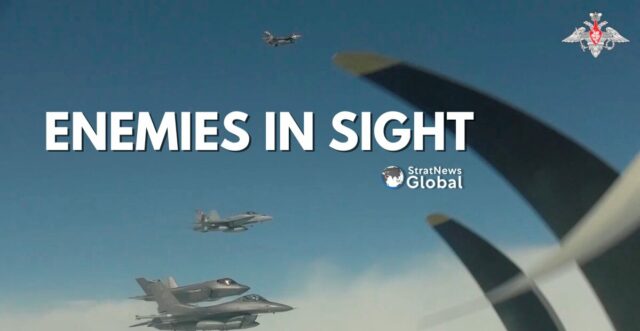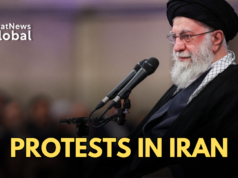On Thursday, Russian and Chinese nuclear-capable strategic bombers patrolled near the U.S. state of Alaska in the North Pacific and Arctic regions. This manoeuvre led the United States and Canada to scramble fighter jets in response.
Details of the Patrol
Russian Tu-95MS “Bear” strategic bombers and Chinese Xi’an H-6 strategic bombers participated in patrols over the Chukchi and Bering seas and the North Pacific, according to Russia’s defence ministry.
“During the flight, Russian and Chinese crews cooperated in the new area of joint operations during all stages of the air patrol,” stated the Russian ministry. The air group was accompanied by fighters from other countries at certain stages of the route.
Escort and International Airspace
The five-hour flight saw Russian and Chinese bombers escorted by Russian Sukhoi Su-30SM and Su-35S fighters. Russia confirmed that no foreign airspace was violated during the patrol.
The U.S. military’s North American Aerospace Defense Command (NORAD) reported that U.S. and Canadian fighter jets intercepted the Russian and Chinese aircraft in the Alaska Air Defense Identification Zone (ADIZ). “The Russian and PRC aircraft remained in international airspace and did not enter American or Canadian sovereign airspace,” NORAD stated.
Strategic Implications
NORAD indicated that this activity in the Alaska ADIZ is not perceived as a threat, but affirmed that it will continue to monitor competitor activity near North America and respond appropriately.
China’s defence ministry spokesperson, Zhang Xiaogang, noted that the joint patrol had deepened strategic mutual trust and coordination between the two militaries. Zhang emphasized that the event was not related to the current international situation.
Russia echoed this sentiment, stating that the patrol was part of the 2024 military cooperation plan and was not directed against any third countries.
With Inputs from Reuters
Research Associate at StratNewsGlobal, A keen observer of #China and Foreign Affairs. Writer, Weibo Trends, Analyst.
Twitter: @resham_sng





